Black Terrier: description of the breed and keeping secrets
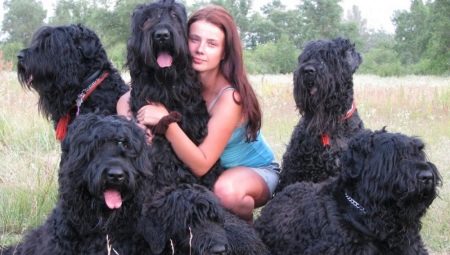
Russia is a special country. Even dogs here are not the same as in other countries. And among them the black terrier stands out for its grace, attractive characteristics.
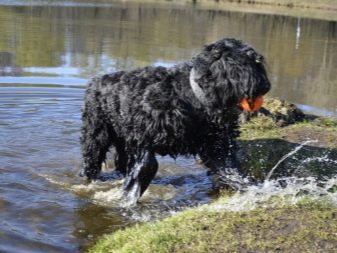
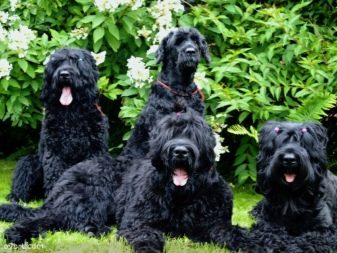
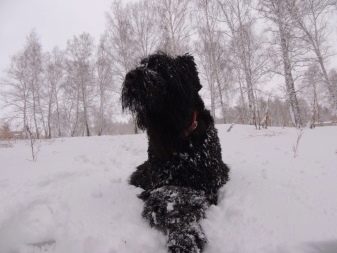

Origin story
There is more literature and other sources on dog breeding than ever before. However, in a number of such materials, including in relation to the Russian Black Terrier, a number of serious mistakes were made. Someone uncritically perceives old stereotypes, someone writes custom-made materials or transfers their impression of its representatives to the whole breed. Therefore, it is very important to understand how things really are.

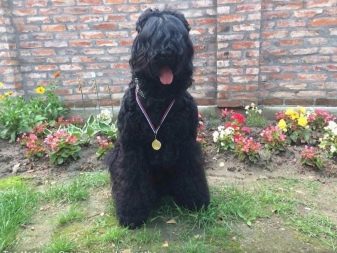
Until the end of the 1940s, the service dogs of the USSR were almost always of a typical European breed. Their disadvantages were their too small size and adaptation mainly to the mild climate of Germany, England, France. Completely different animals were urgently required:
- bigger in size;
- physically developed;
- characterized by greater endurance;
- able to survive the cold and scorching heat;
- suitable for guard needs, protection of individuals, vehicles and property, patrolling the territory.
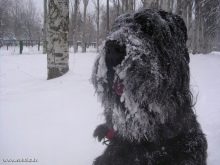
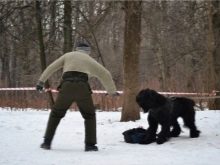
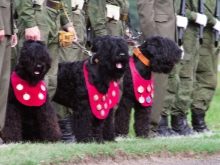
The goal was set:
- achieve a strong constitution;
- make pets stronger and bolder;
- build up wool;
- guarantee the balance of the nervous system;
- improve scent and hearing;
- achieve ease of training;
- to ensure the use of dogs for protection in all climatic zones of the immense state.
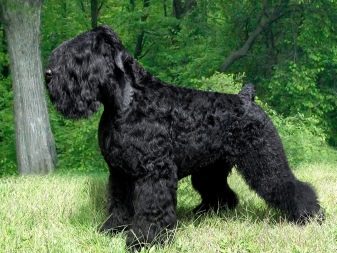
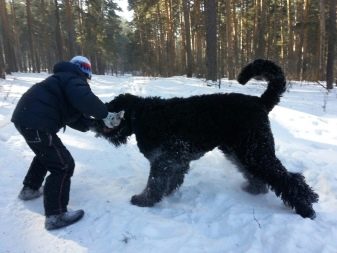
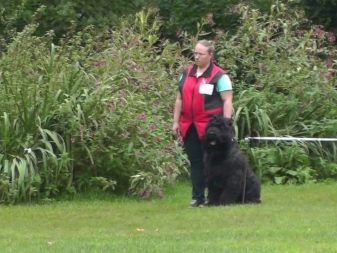

Such varied characteristics existed even then, but they were characteristic of different types of dogs. Therefore, a complex chain of interbreeding crosses was undertaken. The result of the experiments was the derivation:
Moscow Great Dane;

Moscow diver;
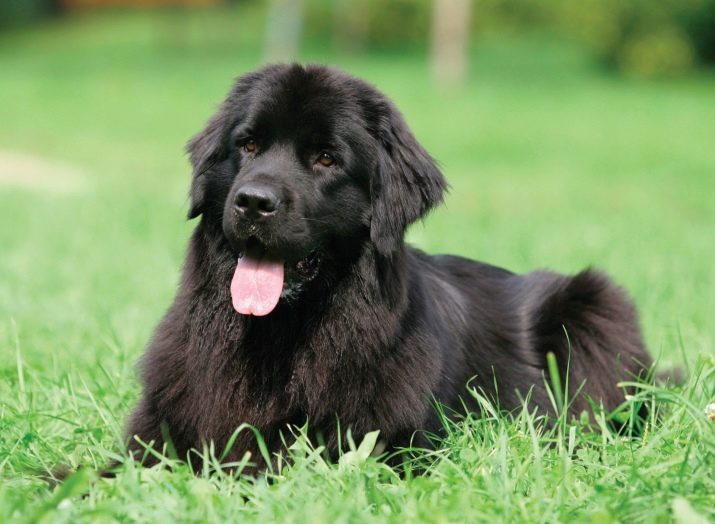
Moscow watchdog;
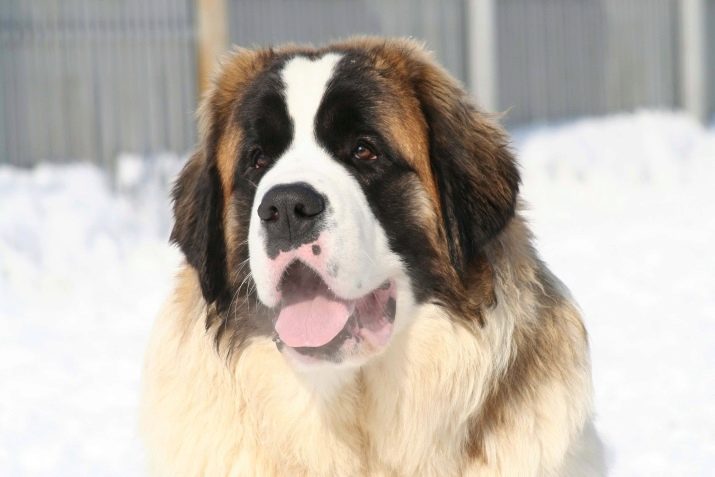
- black terrier
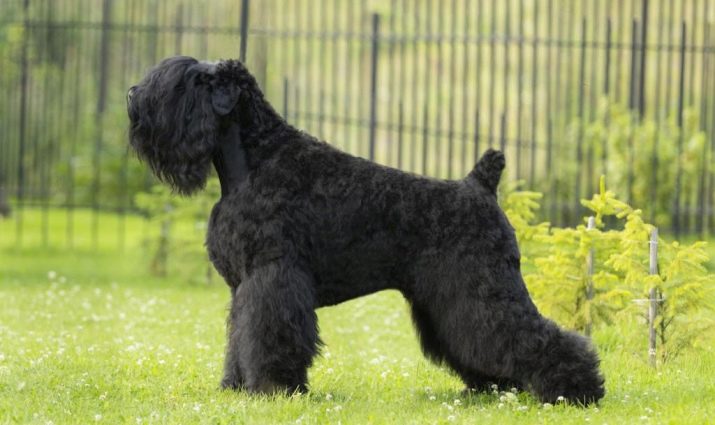
To obtain this last breed, they used:
Newf;
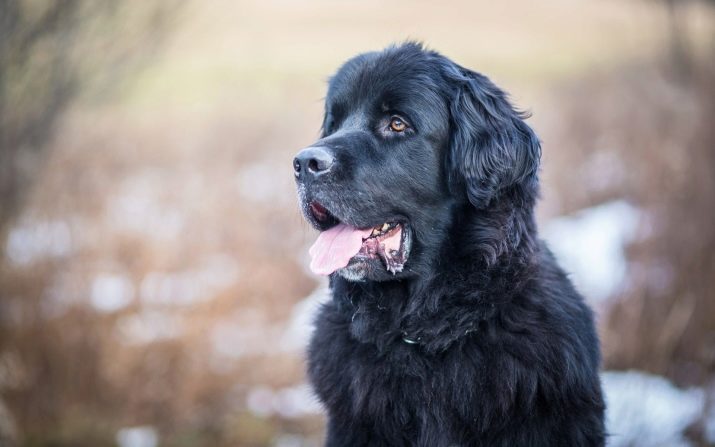
- rottweilers;
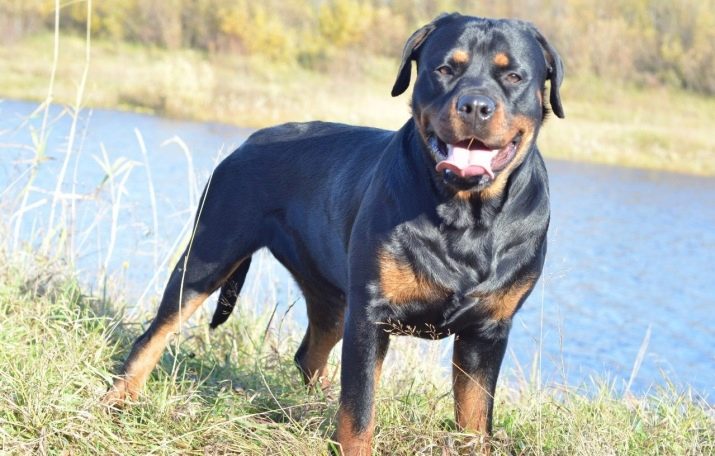
- Giant Schnauzers;
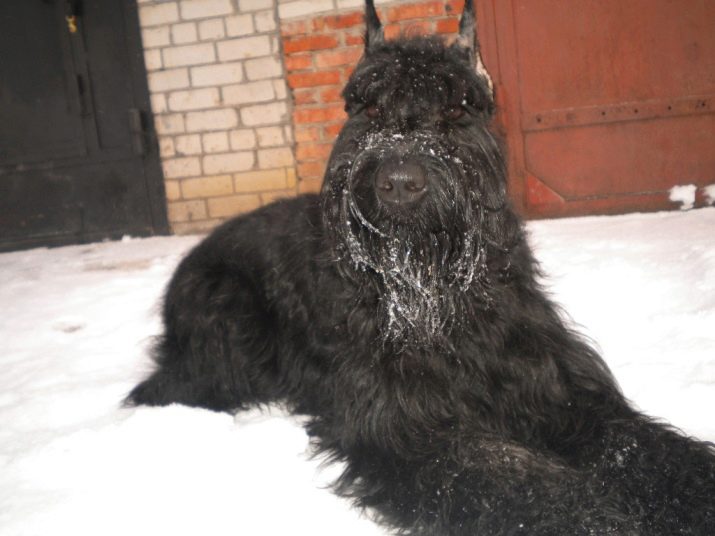
- Airedale terriers.
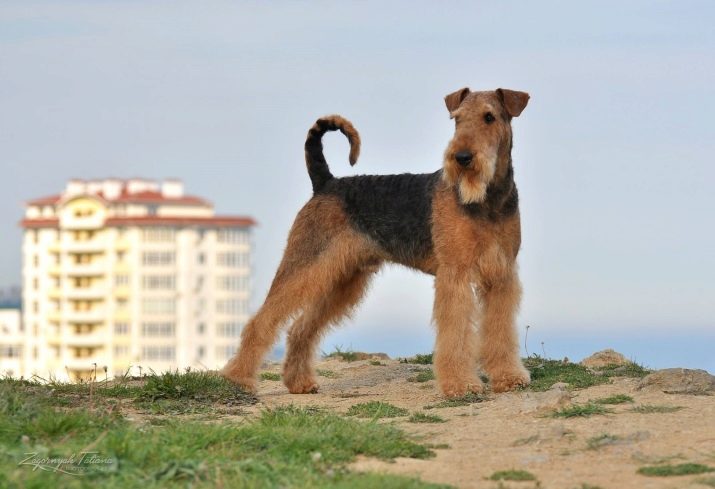
Giant schnauzers attracted the attention of breeders for their excellent working and protective properties, for their activity and assertiveness. Airedale terriers were used to improve the quality of wool and sense of smell, to achieve better orientation on the ground. Airedale willingly penetrate any hole, not afraid to face enemies. The experimenters needed excellent protective qualities from the Rottweilers. At the same time, it was required to compensate for the lack of frost resistance.
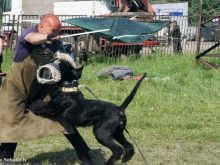
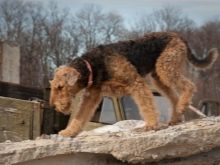
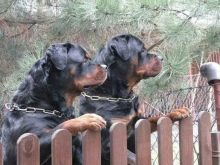
Along with the four main breeds, the Moscow Great Dane and the Russian Hounds (albeit in very small numbers) were adopted in the formation of the Black Terrier. The initially bred mestizo groups began to merge together from the third generation. Unfortunately, the participation of Giant Schnauzers at this stage turned out to be less effective than originally expected. The final formation of the black terrier took place, according to official data, in the 4th generation of mestizos. I managed to get dogs that had:
- tough, slightly shaggy coat;
- strong and developed jaws;
- powerful limbs (without them a weighty body could not move);
- ears suspended by cartilage.
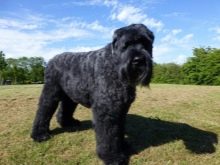
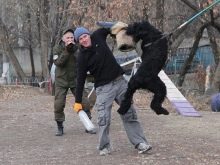
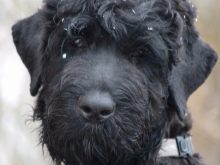
The Krasnaya Zvezda kennel, founded in 1924, officially disseminated information about the creation of the breed in 1956. At the same time, the standard of the black terrier is published in the catalog of breeds at the industry exhibition. For the production of livestock, mestizos of the main breeds were used. Of these, copies were selected that met the established requirements. Other dogs were transferred to work in the main center of military dog breeding or in other kennels of law enforcement agencies.
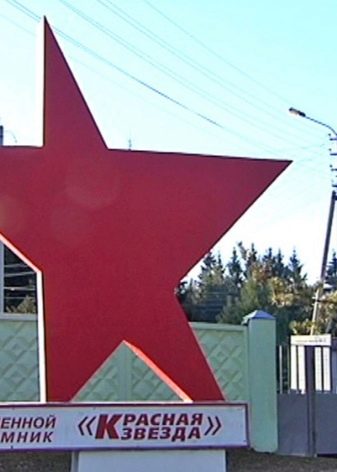
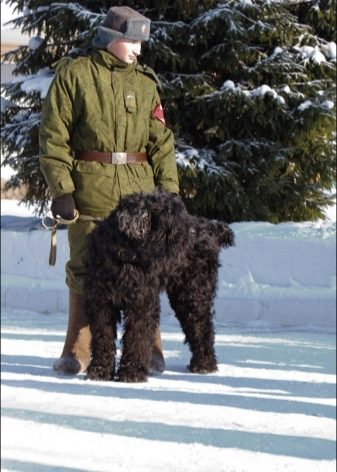
When the "Krasnaya Zvezda" managed to develop a sufficient number of animals that met the standard, they began to be given to private owners. The first among them were the members of the Moscow Service Dog Breeding Club. First, N.N. Nechaeva took over the project management, then M.A.Anokhina replaced her. Later, other clubs of similar specialization began to receive dogs.
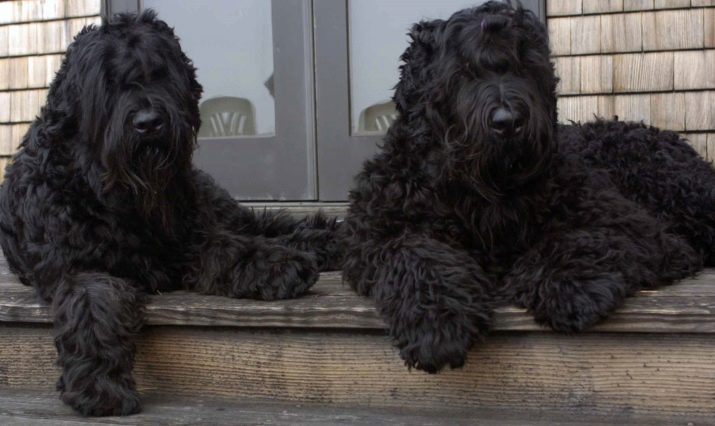
Already the first full-fledged generation has partially "dispersed" to other cities of our country. But the owners were forced to return some of the individuals to the nurseries due to malice. At the same time, dog handlers were actively improving the characteristics of animals. The work was carried out initially under the close supervision of the initiators of the breed. It was even difficult to isolate plant lines, or at least genetic lines. When a lasting result was achieved, the dogs were appreciated even in foreign countries.
Since the work was carried out in the interests of the army and the Ministry of Internal Affairs, the dog handlers were mainly interested in the actual characteristics and simplicity of the content. They tried to minimize the thickness of the hairline, which is always inconvenient in the conditions of nurseries and service enclosures. But dog breeders-enthusiasts in the following decades have achieved a pleasant appearance. Nowadays, it is almost impossible to find RFT with a hard, wire-like coat, and it is considered more like a marriage.

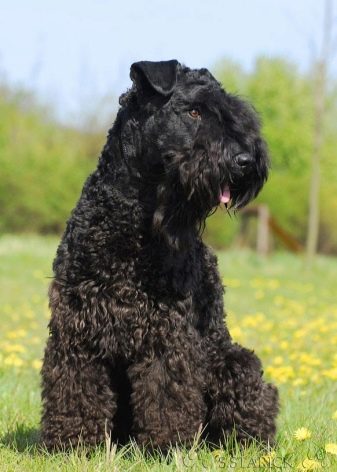
It is customary to divide terriers into two subtypes. One of them ("square") has:
- narrow elongated head;
- dry, strongly raised neck;
- straightened shoulder;
- chest part flattened to a plane;
- excessively elongated lower leg.
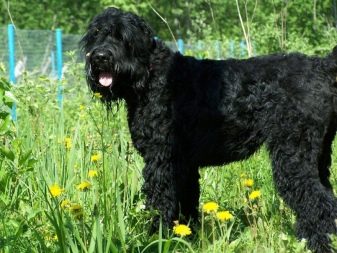
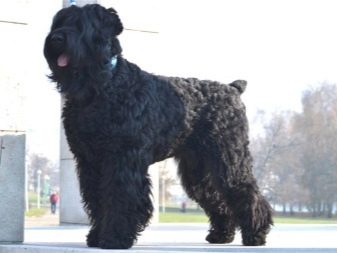
Another subspecies are distinguished by:
- pronounced rudeness of the constitution;
- relief structure of the musculature;
- enlarged chest;
- strongly developed skeleton;
- incredible stability of the nervous system.
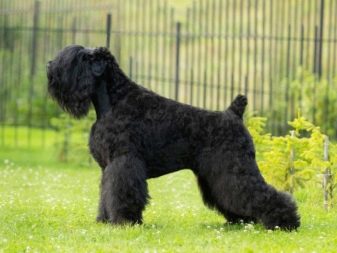
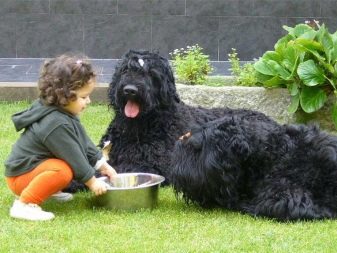
Description of the breed
In characterizing the Russian Black Terrier, it is not enough to limit ourselves to the description of the standard and the main branches of this animal. It is imperative to point out its other properties and psychological parameters. Inexperienced people may regard a majestic dog as a solid black monolith, incapable of expressing emotions. But this opinion is not true.
The absence of "eloquent" in their movements, like those of the BEO, ears, or the sad look of St. Bernards, does not mean little emotionality.
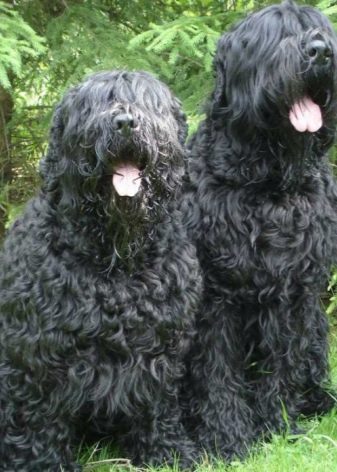
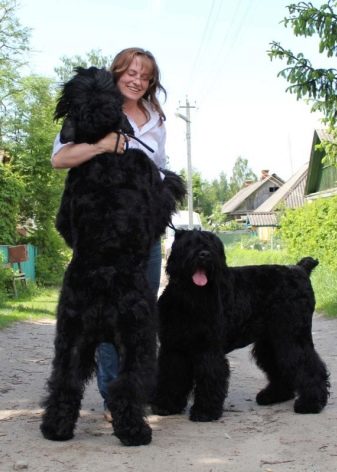
The official standard, approved at the FCI level, specifies the following dog sizes:
- in males - from 0.72 to 0.76 m;
- in females - from 0.68 to 0.72 m;
- taking into account the permissible deviations, the smallest size is 0.66 m, and the largest is 0.78 m.
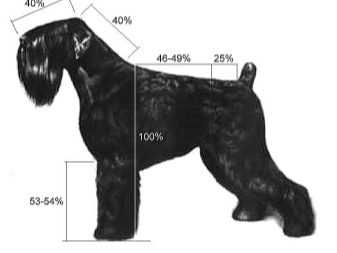
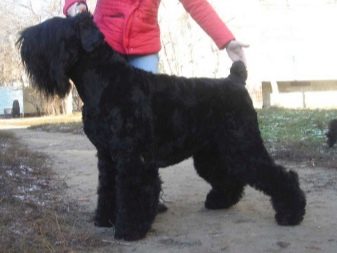
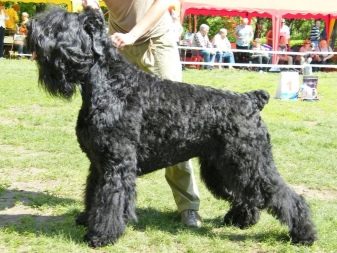
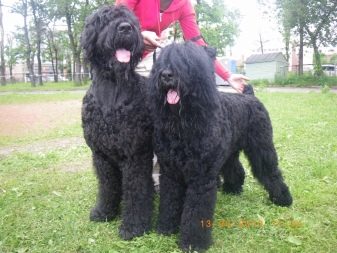
Occasionally, taller animals can also be found. But their official recognition as black terriers occurs only with the preservation of the original proportions and the correct appearance. Dogs weigh from 45 to 60 kg. In accordance with the standard, the exterior should be like this:
- external massiveness of the body;
- proportional addition;
- considerable depth and width of the chest;
- perfectly visible withers;
- the back is set straight and teeming with muscles;
- shortened lumbar zone;
- oblong head;
- the obligatory presence of a beard and mustache.
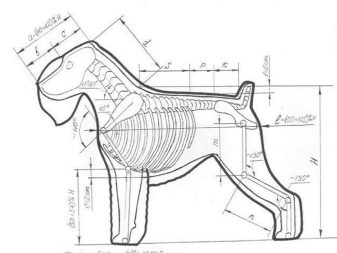
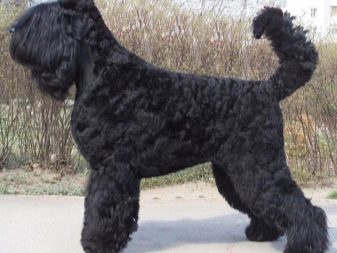
The gums of the black terrier are dark in color. The neck is very long. Although the ears are hanging, they are raised rather high. Typical for them is a triangular configuration. Dry eyelids are tightly fitted to the surface of the eyes. The eyes themselves are oval in shape.
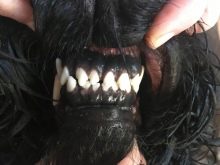
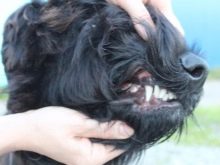
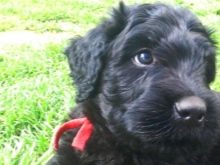
The standard dog has 42 teeth, forming a scissor bite. All incisors in the jaws are collected in one straight line. According to the regulatory rules, it is required to dock the tail in the region of the 3rd vertebra. Legs placed straight should be parallel to each other. The elongated blades are positioned at a 90 degree angle.
The rounded paws end in dark-colored claws. Of the colors for the Russian black terrier, only black is suitable, with minor splashes of gray. The right dog is capable of running long distances and jumping far. Typical manners of movement are gallop and trot. RFT joints are flexible, they bend without the slightest difficulty.
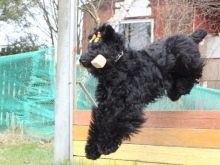
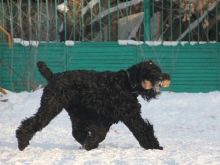
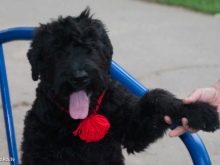
Character
Since during the development of the breed it was originally conceived as an assistant in security work, the dog behaves cautiously with a person whom he obviously does not know. Terriers try by all means to protect the protected area and everything that is on it. They simply "keep the circle", blocking the passage beyond a certain line.
These characteristics make the breed suitable for personal protection.
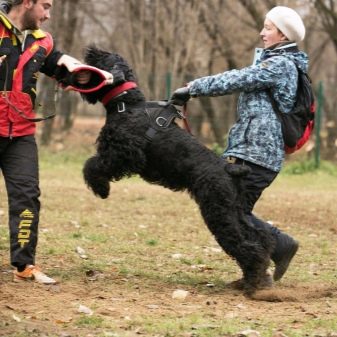

If the upbringing was correct, the animal will protect the owners and their children. At the same time, it will behave strictly, but not overly aggressive. A characteristic feature of early age RFT is a propensity for fun and liveliness. But this does not prevent him from showing:
- a fair amount of independence;
- apparent fearlessness;
- confidence in daily activities.
As it grows up, the dog will behave more and more decorously. However, this does not affect their reliability as watchmen and escorts. As long as RFT maintains normal physical activity (does not become unnecessarily old), it will fulfill its duties 100%. Puppies of this breed, like other large dogs, mature for a long time.
You can count on the readiness of a full-fledged service dog only by 24 months.
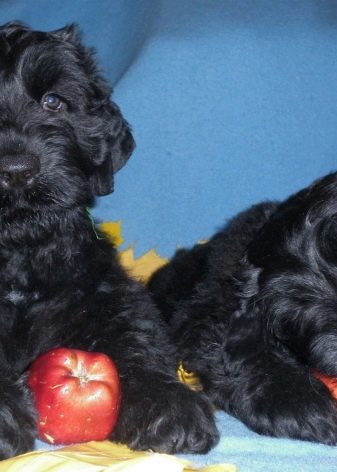
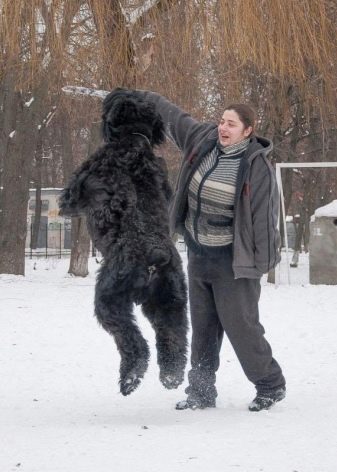
Early socialization is a prerequisite for the normal development and exploitation of the Black Terrier. If it is not done, later there will be a number of problems in communication with other animals and with people. Terriers in general are characterized by unjustified stubbornness. Bypassing this line or significantly weakening it helps a rational approach and daily classes according to a special program. RFT, for all the severity of its appearance, gets along excellently with babies, is able to tolerate all their pranks calmly.
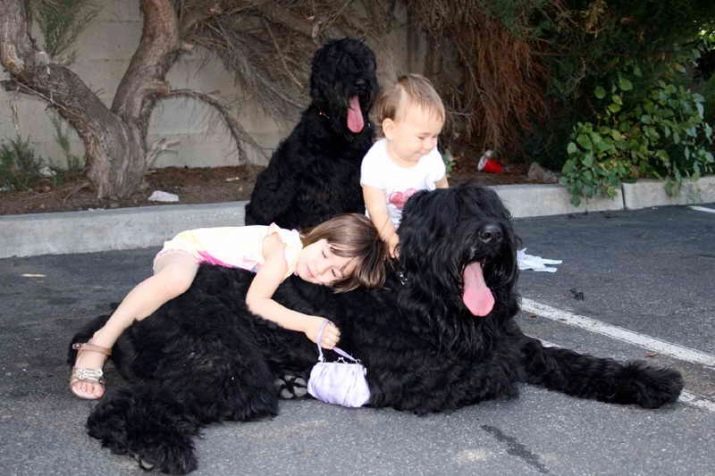
The pet feels deep responsibility for all family members. At the behest of instinct, he perceives them as members of the pack who need to be protected as effectively as himself. Of the positive features of the breed are called:
- powerful intellectual abilities;
- high productivity in work;
- excellent endurance;
- calmness and a favorable attitude towards people;
- loyalty and loyalty to the owners;
- propensity for active games and constant movement.
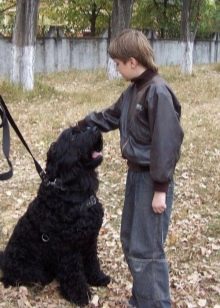
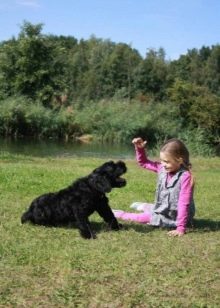
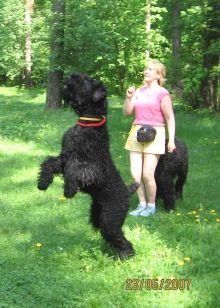
Comparison with the Giant Schnauzer
These two breeds are quite close to each other in biological terms, but the similarity between them in practice only concerns their external appearance. There are significant differences between them in terms of performance. The Black Russian Terrier takes up more space and requires more food. And you will have to deal with him much more than with large schnauzers.
However, the main difference between them still concerns psychology.
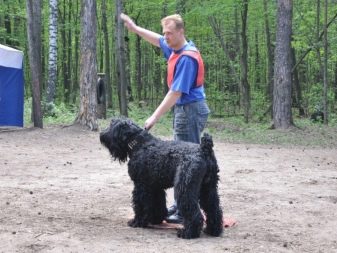
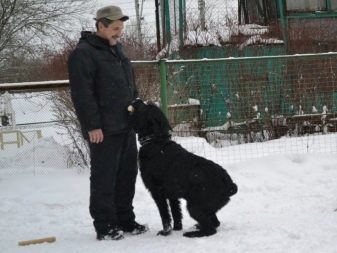
Black animals are much calmer and calmer, which is clearly visible on a walk. Leisurely marching dogs are much more pleasant to their owners than ever-fussing schnauzers, and grooming their fur is very easy. The Moscow bearded man, on the other hand, falls asleep more on the floor with endlessly crumbling hair. The Giant Schnauzer outperforms the Terrier when kept alone and when used in competitions. But he is inferior to the Russian beast in suitability for security and guard service, for keeping in a frosty climate.

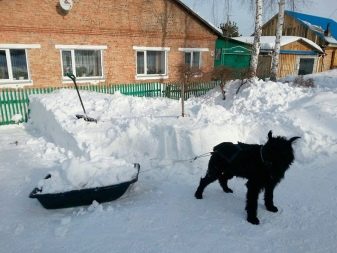
Trainers value schnauzers very much, but individual owners like black terriers more - it is more pleasant to work with them, and this gives many people pleasure. But when the dog is already trained, then RFT is better suited for a country house. There, the schnauzer will simply freeze, even if we are talking about relatively warm Russian regions. Another plus of black dogs in the country guard is calmness and less tendency to bark.
Unlike rizen, they will calmly let suspicious strangers through, but will no longer let them out of control without a command.
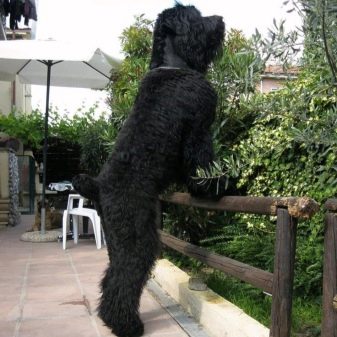
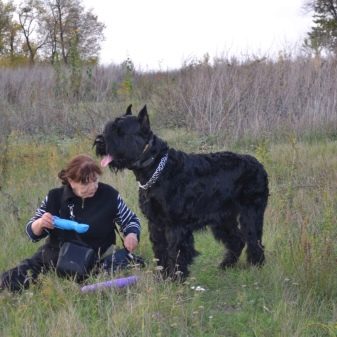
Life span
The vast majority of Russian terriers live 10-11 years. But some specimens can live up to 14 years. Experts believe that it is not only about proper care, but also about flawless genetic characteristics. Both of these components are equally important in practice. In general, the breed is not very susceptible to hereditary diseases.
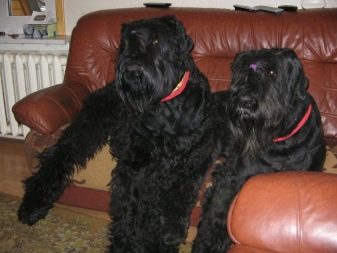

However, a significant part of experienced breeders conduct selection taking into account special medical tests. Experienced dog breeders and professional dog handlers unanimously advise to require documents on their passage and the result obtained upon purchase. The life of a pet can be significantly reduced:
dysplasia of the hip and elbow joints;
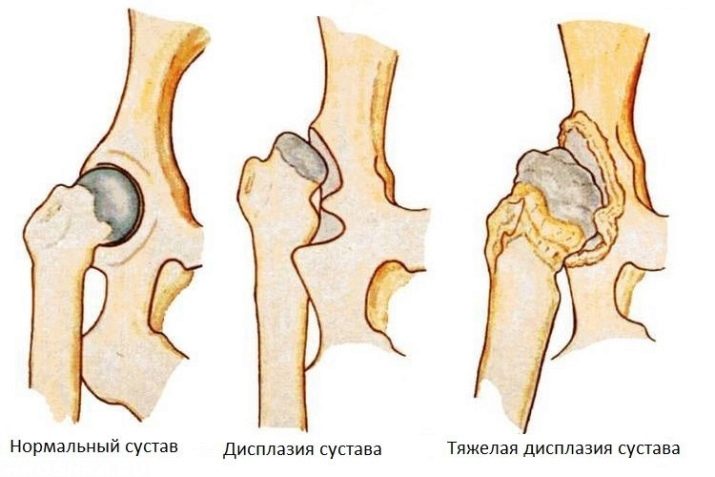
ear lesions;
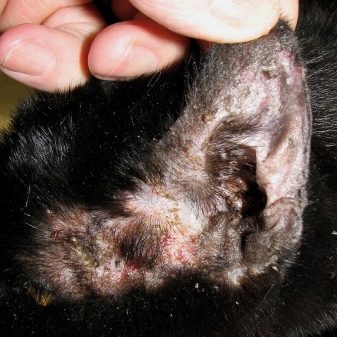
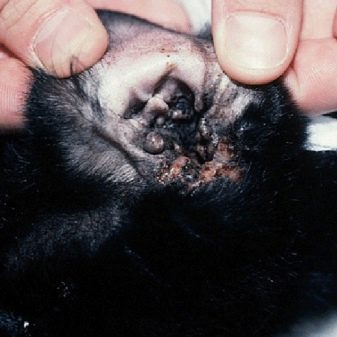
- infection with pathological fungi;
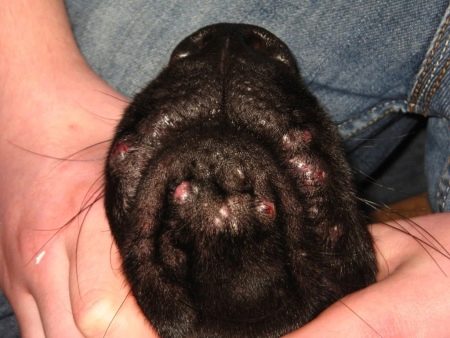
juvenile paralysis.
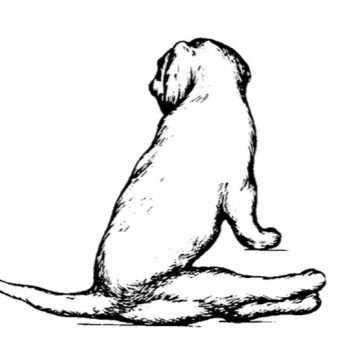
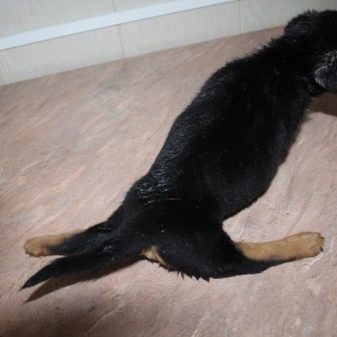
Maintenance and care
Russian black terriers still differ significantly in the parameters of the hairline. The best are those in which the coarse awn dominates, and the undercoat is small. It is slightly worse to work with dogs in which these parts of the coat are balanced. It is most difficult to care for pets with a predominantly soft undercoat that dominates the guard hair. In the first case, grooming is very easy - you just need to shave the guard hair on the body and on the thighs annually.
The second type of coat is considered the most elegant, but will require systematic brushing of the dog. Without such a procedure, he will not be able to maintain the texture for a long time. The third type of hairline is not very popular with both owners and experienced dog handlers. The animals will have to be brushed every day.
Even with this requirement, there is a high risk of tangles.
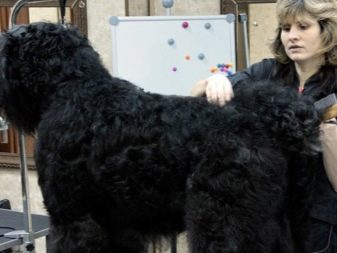
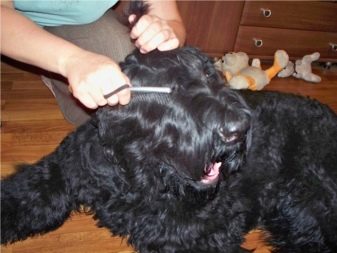
Decorating hair, regardless of the type of base coat, is coarse in structure. They only need to be washed and combed.Before starting a haircut, you need to achieve a clean coat. It should contain nothing but undercoat and awn. All dead hair and parts of the undercoat should be removed immediately.
A trimmed terrier should look strong and confident.. The slightest impression of some kind of decorativeness is unacceptable. This is important even when caring for puppies, let alone adult animals. The ears are cut short both inside and out. On the outside, leave 0.5 cm of hair.
The forehead is trimmed with a machine, starting from the brow ridges. At this point, you need to make a rectangular platform, approximately equal in width to the skull. At the junction of the forehead and the back of the head, they form a smooth transition between short and long hair to create a kind of "hat". The cheekbones are flattened as much as possible, and the head is recommended to be cut in the form of a brick.
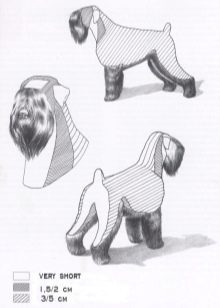
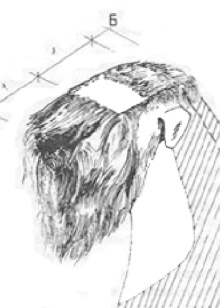
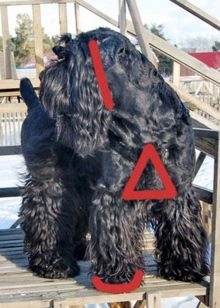
Cutting the hair on the inside of your neck is easy. But regardless of the chosen haircut scheme, any of its lines should be smooth. Wool is left on the body with a length of 3-7 cm. The exact numbers are determined for each dog individually. It is required to show:
- the severity of the developed withers;
- roundness of the paws;
- "Edge" on the outer side of the thigh and on a certain part of the lower leg;
- elongated hair on the metatarsus.
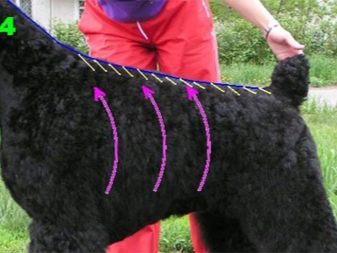
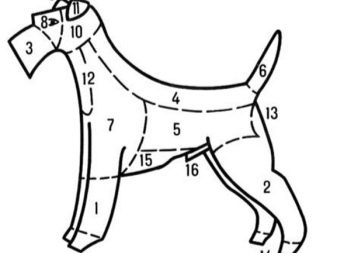
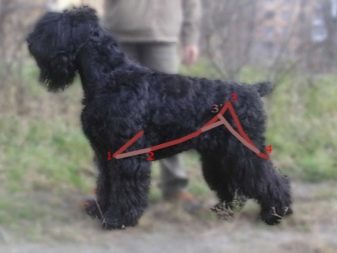

Grooming is too demanding to try to completely do it on your own. This is especially true when there are plans to participate in a dog show. RFT must be cut and washed. Washing is required whenever, when touching, stroking the dog, there are negative sensations, a desire to wash your hands. When the terrier is washed, but not combed, it turns out even worse - the mats will fall down to the state of "felt boots".
The beard needs to be processed as carefully as possible. It is constantly clogged with food, moistened with water. An unwashed and undried beard becomes a favorable place for the development of fungus, so the terrier can smell bad. There is no point in shaving off your beard. If she is so emotionally annoying for the owners, then they should buy another breed.
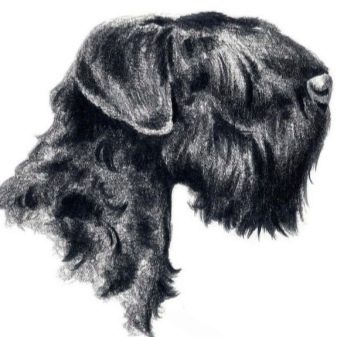
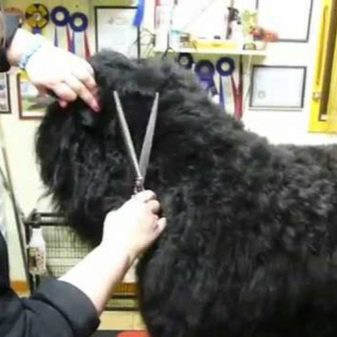
Combing becomes more frequent when molt sets in. This allows you to noticeably accelerate the renewal of the hairline. Clipping is strictly required. It is carried out when their natural growth begins to create problems for the animal. If the nails are sufficiently abraded on hard ground or asphalt, they should not be trimmed further.
Regardless of this circumstance, it is required to remove hair growing inside the auricles, and sulfur that collects there. Without such cleaning, the dog can become seriously ill. Another indispensable item in care is cleaning your teeth with a special paste. This procedure is carried out at least once every 72 hours. It is strictly forbidden to use toothpastes intended for humans!
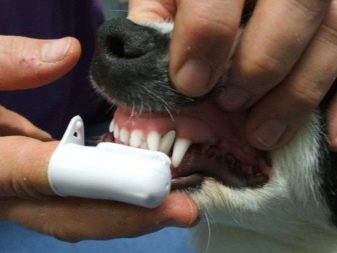
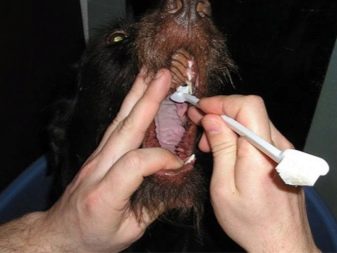
What to feed?
Despite the fact that RFT belongs to the same species as wolves, it is undesirable to feed them with meat alone. This kind of diet is simply not suitable for animals. The widespread opinion about the need to increase the satiety of food with cereals is incorrect. Any carbohydrates for tetrapods are "empty" and beyond the modest daily allowance, they simply cease to be absorbed. But in the choice between factory feed and natural products, the owners are not limited in any way.
Adherents of feeding dogs with natural food should know the optimal ratio - 30/70. 7/10 of the daily serving should come from proteins, represented by:
- varieties of meat with limited fat content;
- sea fish;
- by-products (they are given a maximum of 1 time in 7 days).
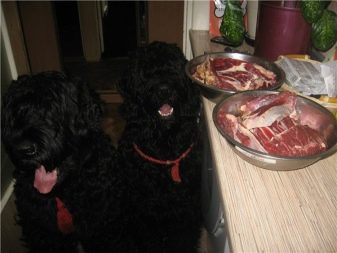

The rest of the feed should be vegetables and fruits, fermented milk products, cereals. Of all the fruits, only those are chosen that are guaranteed not to cause allergic attacks. Another nuance is the strictest ban on pure milk. It is categorically unacceptable to feed Russian terriers:
- sweet food;
- smoked meats of any kind;
- salty foods (regardless of the intensity of the salting);
- dishes rich in spices;
- semi-finished products;
- bread, other bakery products.
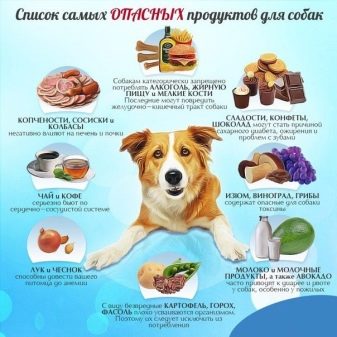
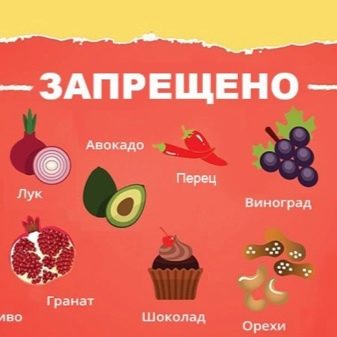
Of the ready-made mixtures, holistic is best suited. The super-premium is a little worse. The high cost of these feeds is quite justified, because they include not only protein, but also other trace elements and vitamins. Therefore, the terrier's body will work like a clock.
Mixing natural food and industrial feed is not allowed. It does not matter whether they are used in one step or sequentially one after the other. Inevitably, an unpleasant result will turn out - an imbalance in the digestive system. Whichever feed is used, it must be consumed in a limited amount. From early childhood, puppies need to develop a clear discipline in food. Overeating invariably leads to obesity, followed by joint problems.
Sometimes, already at the final stage of growing up, these very joints are severely deformed. The result is bow-legged, unpleasant looking dogs. The food bowl should be placed on a slightly elevated position. This is the location of the feeder that best suits the physiology of the dog.
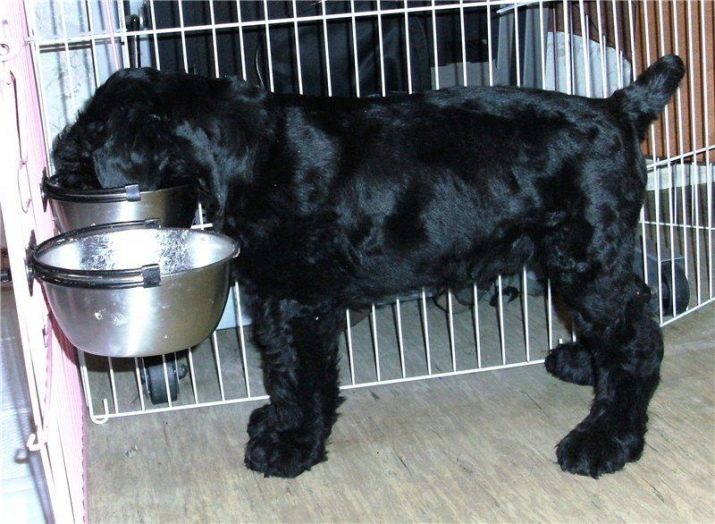
One more nuance - containing RFT, you will have to put a carpet on the floor. Walking on linoleum, parquet or laminate, the pet harms its limbs. They are often deformed and develop incorrectly. Somewhat unexpected for dog breeders will be the ban on frequent stroking on the head. In terriers, because of it, the ear growth line can be crooked. Small puppies should be kept away from stairs, closets and other high places. Falling from them almost inevitably provokes serious injuries.
Terriers should be combed and bathed immediately after purchase. At an early age, this procedure is done as often as possible. If the dog is not washed and combed at this time, later it is completely impossible to accustom them to such manipulations. If these requirements are met, the health of the pet is guaranteed. However, it is equally important to develop suitable practical qualities in him.
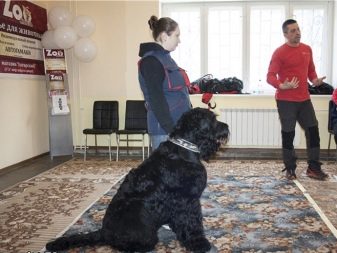
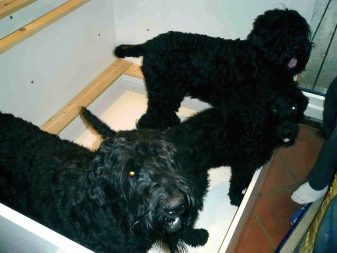
Education and training
Terriers need play because it is:
- burst of energy;
- essential element of learning;
- a valuable way to improve your health.
Even as the dog matures, it needs to play in order to reinforce its status in the "pack". And therefore canine handlers, amateur trainers actively use the game elements of training. Fighting the instinct that commands everything in the way to gnaw, bite and scratch is almost useless. But you do not need to provoke the terrier once again - let all your things be inaccessible to him. The selection of toys that will satisfy those same instinctive needs should be done individually.
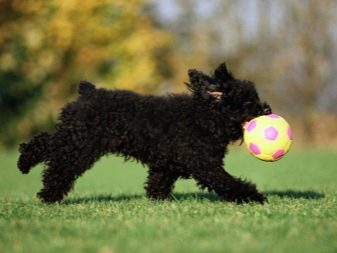
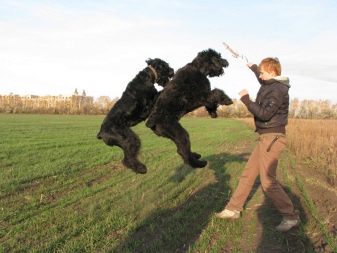
There are a lot of options:
- balls;
- large beef bones;
- tarpaulin, rolled up to the state of "sausage";
- "Squeaker";
- special sticks;
- Stuffed Toys.
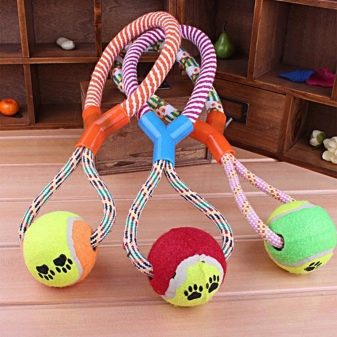
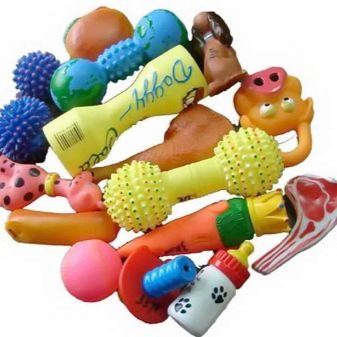
Old shoes, clothes (and even their parts), furniture parts cannot be used as toys. Animals, in spite of all their intellectual achievements, in principle are unable to understand why it is possible to play with some things, but not with others, outwardly similar. The dog distinguishes everything by smell, and the category "used - not used" is above the limits of its presentation. You can turn the dog away from the legs of the chair or other objects by using cologne or another substance that the terrier will not like.
When interest in the same leg is shown only once in the midst of play, you need to distract the dog and provide him with a more interesting object.
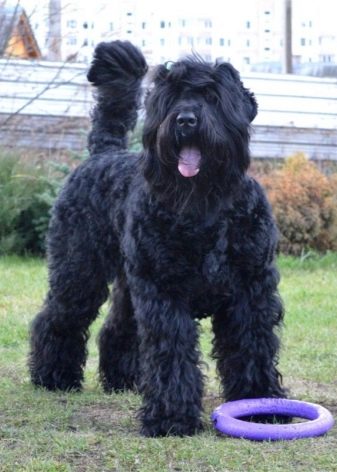
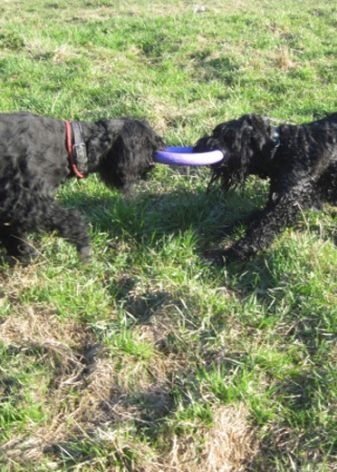
You can do it differently, using the reflex of resistance. To do this, they open their mouths to the puppies and put the "forbidden" object in force, but without self-harm. Older terriers deserve a different treatment: the owner must tell them "Listen", show alertness and go to another room.One such measure is usually sufficient to explain the unacceptability of a particular behavior. The tough prohibitive command "Fu" is given only in a particularly responsible or especially difficult situation.
The owner of RFT must clearly understand that this is an extremely powerful means of influence, almost an extreme measure. Excessive use of such an order devalues its significance. In addition to training, you will need to take care of how to properly leave the puppy at home. Even before leaving for work or other long absences, you need to walk him. It is useful to say the phrases "I am leaving for the service," "I will soon," and so on.
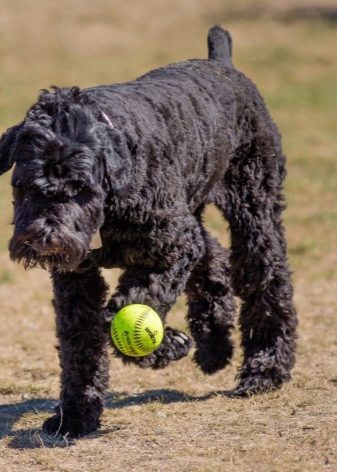
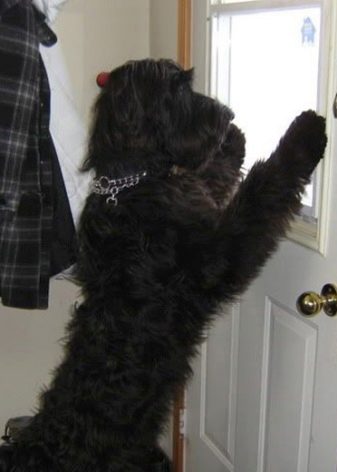
Although these are not commands, they must be repeated every time you leave the house and, moreover, in a strictly unchanged form. Then the animal will get used to these formulas and, when pronouncing them, will wait exactly as long as necessary. When an object (any) is thrown to a terrier, you need to look where he will drag it. If he goes to the owner, he will have to command "Aport". It is categorically impossible to play tug of various things with dogs that have not formed teeth and jaws.
If RFT shows leadership tendencies, it is categorically impossible to give in to him when pulling. Otherwise, the authority of the owner will be undermined and there is no need to count on the dog's obedience.
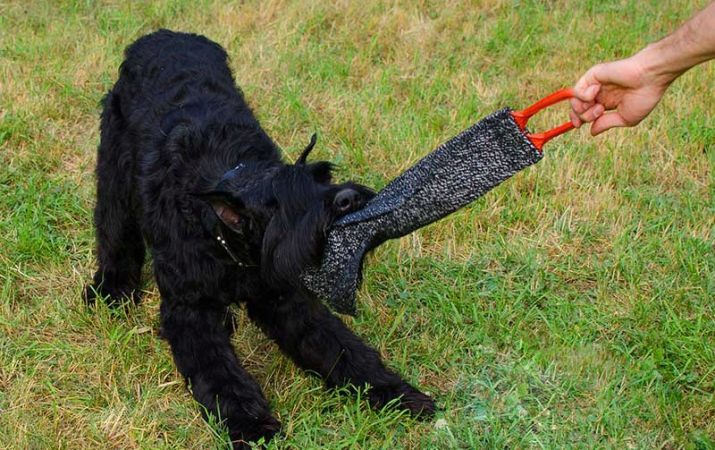
It is also useful to use the exercise of throwing a toy between family members. In this case, the terrier must monitor the movement of objects and the movements of the people themselves. Sometimes it's even worth starting with deliberate mistakes. This will increase your pet's interest. Games that are accompanied by the running of the owners for the animals are strictly prohibited.
On the street, you need to play with terriers only with house toys... Otherwise, they will pick up everything from the ground. Elements of struggle and fidgeting in games are perfectly acceptable and even desirable. But it is required to immediately stop playing when the puppy begins to bite in earnest. From a very early age, he must master the attitude that the owner has absolute immunity.
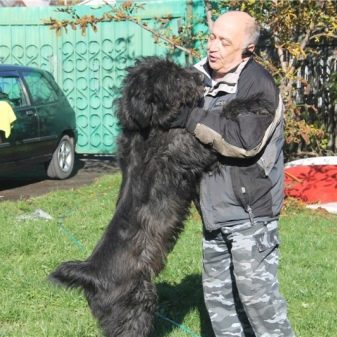
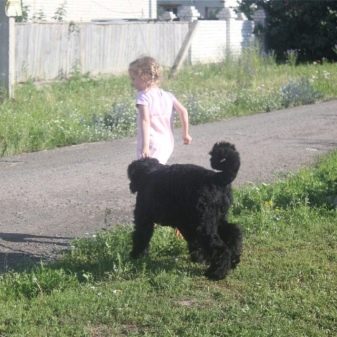
But curiosity and interest in everything around you can only be welcomed. In this case, it is necessary to categorically exclude any provocation of an attack on other living beings. If the pet shows aggression itself, it must be gently but decisively suppressed. It is useful to master the command "observe". This order will come in handy when a suspicious person (car) appears nearby, and when children play in the yard, and in some other cases.
It is advisable to walk RFT with well-bred dogs. Otherwise, the imitative reflex will force you to adopt not the best forms of behavior. Near any roads and railways, even when they are empty, you need to stop and look around. When crossing the highway, you must give the command "Nearby"... Running and playing with the puppy is easy to combine with team development "Barrier".

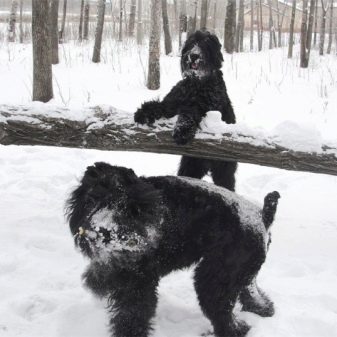
When the terrier does not approach at the signal of the owner, this is either a formidable manifestation of disobedience or hearing problems.
The command "to me" must be executed immediately and unconditionally, regardless of all other circumstances.... To achieve the execution of the order, one must always call up the RFT without subsequent punishment or taking away "interesting" items. Let the call always turn out to be pleasant - then the result will delight the owner. The next order that needs to be mastered is an instant stop at the command of the owner.
Inhibitory commands are worked out mainly with painful negative stimulation. It should be applied not only in case of refusal to carry out the order at all, but also in case of braking, sluggishness. Workouts need to be repeated over and over again, achieving an impeccable result. In case of persistent failures, it is better to resort to the help of specialists. It is strictly prohibited:
- let the dog on the work and dining table;
- let her go to the kitchen once more;
- allow to lie or sit on the couch;
- to achieve a total aggressive reaction to every passer-by or to every car for no reason.
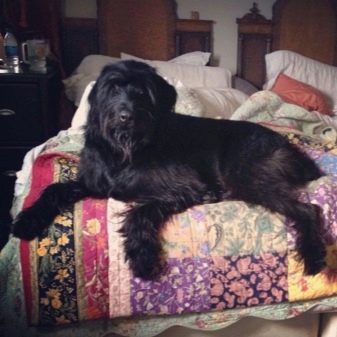
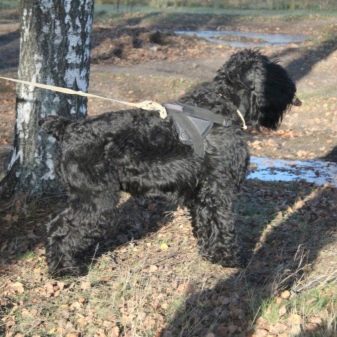
Owner reviews
The Black Russian Terrier is considered by many owners to be a poorly trained dog. But those who know how to achieve obedience rejoice in this pet. It is easier to train the animal at an early age. In reviews about black terriers they also note:
- zeal for the protection of the territory;
- uncompromising protection of people;
- love for all family members;
- a painful reaction to the slightest conflicts within the family;
- difficulties in grooming the coat;
- external beauty;
- the need for constant communication;
- immunity to rude behavior.
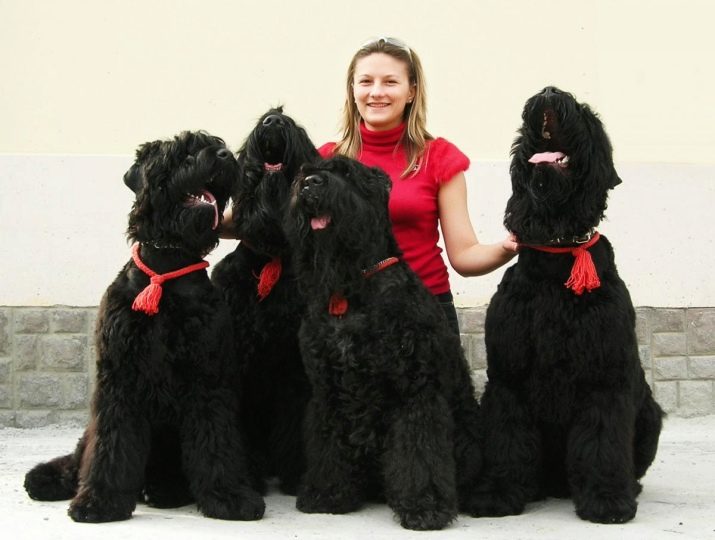
For the characteristics of the breed, see the video below.






































